|
Home: Tier2 current page
KAYAKING BASICS
Basically try to stay in the boat and move fast! Yes, you need to move and steer correctly. However, you do not need to over exert yourself when doing so. Sometimes, the process of paddling a kayak is a lot easier than it seems. With a few kayaking basics you'll be on your way. My husband jumped in a kayak during a race. It was very windy and tough to tack a straight line. He had canoed and was very good, but hadn't ever handled a kayak paddle. It was quite different. After a while he got the hang of it, but for a while the wind whipped the little boat about. The point is even in a strong wind with no instruction he picked it up quickly. Kayaking is fun and the whole family can join you when you train! That is for flat water paddling. ENTERING THE KAYAK Kayaking Basics
When your weight is shifted incorrectly, the kayak will not be stable. This creates the dreaded kayak teeter when you think you might be going in. To maintain that balance there is a trick. To sit down put the kayak paddle behind you across the boat. Each end of the paddle should be touching the opposite side of the boat. Now you are in! To exit you'll do the same thing. Put the paddle behind you on the sides of the boat. Put your foot over the side one at a time and step out. You'll want to be as close to the shore as possible. In Primal Quest Badlands the water was so choppy, we had to move the boat out some to get in or risk being slammed up to shore. Enter the boat the same way in water under a foot. If you are in water over your head that is a totally different technique which we'll look at in the future. STROKES Kayaking Basics
There are several strokes you'll need to know forward strokes, power strokes, and sweeps. Here is a closer look at them: Forward Stroke - As the name implies, a forward stroke entails progressive forward motion. This is achieved through a motion of the upper torso. Namely, you will perform a stroke with an overhand movement on the right side. Dip the paddle in on the right side, like your setting a fence post. Pull the fence post (paddle) straight back towards your hip. Remove the blade at a horizontal angle right at the hip. Then, repeat the same movement with the other arm leading. Power Stroke - The purpose of the power stroke is to help expedite the speed of the kayak in a controlled direction. The way it works is not much different than the forward stroke other that the fact that the paddle is held (and stroked) in a vertical position. This will greatly enhance the ability for the kayak to move in a definitive speedy manner. This stroke is not for long distances. It can make you very tired. But we use it in adventure racing at times, when we need to get through heavy wind or rapids. Sweeps - Sweeps are sometimes misunderstood but they are not all that complex to understand. The purpose of this type of stroke is to turn the kayak and it can be performed in forward or reverse manners. Wind up your torso and hips to push your shoulder forward on the side where you will do the sweep. Plant the blade all the way into the water, but keep your paddle as horizontal as possible. The way this works is that you plant the paddle in the water and then unwind the hips and torso in a rotational manner while leaving your arm in the same position. This will "sweep" the kayak into a desired direction rather effectively. So you basically take your forward stroke, but make it very wide. You'll make a wide arch, keeping the paddle horizontal until it almost hits the boat. This will turn your boat the opposite direction. Rudder -For those that do not have a rudder attached to the kayak, you can use a paddle as a rudder. Basically, you put one paddle blade in the water and the other will be in the area of your shoulder. Slice the water immersed paddle in a 45 degree angle towards the direction of your shoulder. This should yield the effective rudder like result you seek. Q AND A WITH BILL Kayaking Basics in Adventure Racing
Well it ended up being more like 24 hours then 18, but I did finish. I did also learn that I can kayak, sing and paddle, though my partner would probably argue that paddle stroke didn’t do much. I talked with expert paddler and former pro adventure racer Bill Lovelace about paddling in an expedition racer where paddling sections can last a full 24 hours! I got to paddle with Bill in a race and he he was an incredible paddler. When I stopped paddling you couldn’t even tell I had stopped! Can you talk about the scooped paddle vs the flat paddle?s
How long are the kayak legs of each race?
In Patagonia, I think the first trek leg lasted 3 full days where you didn't see any crew...we had a total elevation gain in that race of over 50,00 vertical feet...the best way to sum them up, is every leg is incredibly long...you measure the distances in days. We paddled once from Maratha's Vineyard for 36 hours. How should I weight train for kayaking?
Using a weighted pole and mimic the kayaking motion for extra strength. Shoulder and upper are excises are great. Also train the torso as that is where you actually paddle from. Ian Adamson has some good exercises listed in his book. RESOURCES Kayaking BasicsThe two adventure racing books below have some good paddle sections. Ian Adamson is a world class paddler and his book has great tips.
DO YOU HAVE A KAYKING BASICS QUESTION?Send us your questions and we'll post them here. If you have questions about kayaking or kayaking during adventure racing, Bill will answer your questions. |
Sign up for our Extreme Adventure FREE Sports-ZineExtreme Adventure Sports ZineThe right column is 180 pix. wide Please don't insert items larger that 175 pix. wide |
The left column is 180 pix. wide
- Please don't insert items larger that 175 pix. wide
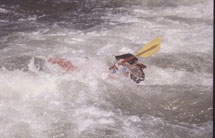 Kayaking basics can make your day a great one in the kayak. Kayaking remains one of the most fun water sports one could take part in. I am always excited when the kayaking sections come up in adventure racing.
Kayaking basics can make your day a great one in the kayak. Kayaking remains one of the most fun water sports one could take part in. I am always excited when the kayaking sections come up in adventure racing.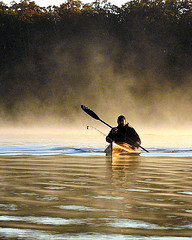 The journey of kayaking begins with entering and exiting the kayak. The key here is to keep your weight properly centered in the middle of the kayak.
The journey of kayaking begins with entering and exiting the kayak. The key here is to keep your weight properly centered in the middle of the kayak. 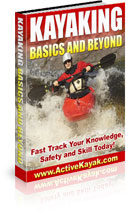
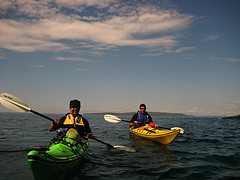 Hold the paddle in both hands with the paddle above your head. Now set it on your head. Move your hands until your arms bend at a 90 degree angle. Now your hands are in the right place!
Hold the paddle in both hands with the paddle above your head. Now set it on your head. Move your hands until your arms bend at a 90 degree angle. Now your hands are in the right place! 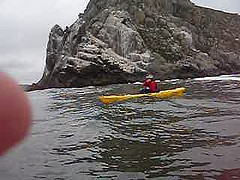 When you are paddling in an extreme sport can be a relief for a little while then the arms can become quite dead. Kayaking basics come in handy. I remember at Primal Quest Utah, after the first hour I was thinking Oh my goodness I cannot do this for 18 hours.
When you are paddling in an extreme sport can be a relief for a little while then the arms can become quite dead. Kayaking basics come in handy. I remember at Primal Quest Utah, after the first hour I was thinking Oh my goodness I cannot do this for 18 hours. 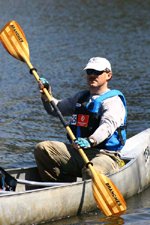 The winged paddles are much more efficient and if you were doing a long paddle, will give you greater distance with less effort and less weight to lift per stroke. There is a trade off however, as you get a big 'scoop' of water each time.
The winged paddles are much more efficient and if you were doing a long paddle, will give you greater distance with less effort and less weight to lift per stroke. There is a trade off however, as you get a big 'scoop' of water each time. 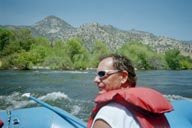 That is a tough question to answer. In Eco in the first race we had three horses and five people and we had to 'run' 44 miles taking turns on the horses. One trek leg lasted two full days in the desert...don't know how far it was... the second Eco, the first leg was an 84 mile (21 hours) canoe paddle...the last leg was a 36 hour kayak paddle...one race had an 86 mile (all one section) mountain bike leg.
That is a tough question to answer. In Eco in the first race we had three horses and five people and we had to 'run' 44 miles taking turns on the horses. One trek leg lasted two full days in the desert...don't know how far it was... the second Eco, the first leg was an 84 mile (21 hours) canoe paddle...the last leg was a 36 hour kayak paddle...one race had an 86 mile (all one section) mountain bike leg. 







